Chandrayaan-3, India's lunar mission, achieved a significant milestone in lunar exploration with a soft landing on the Moon's South Pole on August 23, 2023. India has become the first country to land a spacecraft successfully on the moon's south pole. The landing site, named Shiv Shakti Point, is estimated to be around 3.7 billion years old, coinciding with the time when primitive microbial life emerged on Earth.
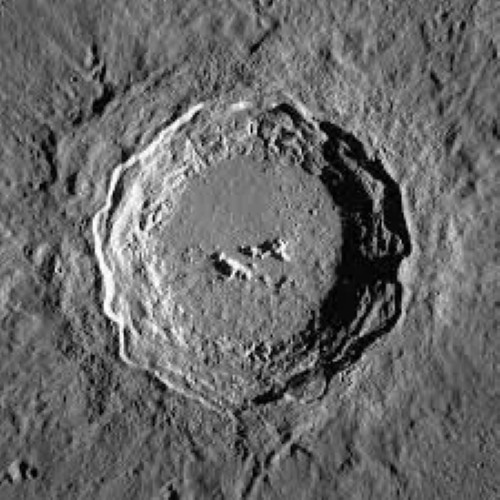
Source: ebnw
Also Read| Chandrayaan-3: Why is it important to land on the South Pole of the Moon?
Key Findings from ISRO's Study
India's Chandrayaan-3 mission, which made history by landing on the Moon's south pole at the Shiv Shakti point, has unveiled fascinating insights about the lunar surface. A team of scientists from ISRO's Physical Research Laboratory (PRL) has conducted a detailed analysis of the terrain surrounding this site, discovering that the area dates back approximately 3.7 billion years—a period that coincides with the emergence of primitive microbial life on Earth
As per ISRO’s latest study,
- Age Estimation: Using advanced high-resolution imaging techniques, ISRO scientists, led by the PRL, analyzed 25 craters in the region. The study estimated the landing site’s age to be 3.7 billion years. This aligns with the emergence of primitive microbial life on Earth.
- Lunar Surface Evolution: The Moon's surface undergoes extreme meteorite impacts and temperature fluctuations, leading to the breakdown of exposed rocks into regolith (lunar soil). Over millions of years, this process has shaped the surface, influencing the terrain around the landing site.
- Terrain Analysis: Scientists examined three distinct terrain types at the landing site: Rugged terrain, Smooth plains and Low-relief smooth plains (location of the landing site)
- Tools Used: High-resolution imaging techniques, including Lunar Reconnaissance Orbiter (LRO) wide-angle camera and Terrain camera to analyze craters and rock formations.
Geological Context and Moon's Evolution
- Micro-meteorite Bombardment: The Moon’s surface has been continuously bombarded by micro-meteorites and subjected to extreme temperature changes, which has caused rock fragments to break down into regolith (fine dust) over millions of years.
- The Pragyan rover revealed that rock fragments, some over 17 meters long, are concentrated near a fresh crater about 14 km south of the landing site. Among the 5,764 rock samples analyzed, around 525 were over 5 meters long, with the largest fragments found near the fresh crater. The formation of Regolith in this region has experienced continual meteorite impacts and temperature variations, contributing to the breakdown of rocks into regolith, which forms the Moon's surface layer. These rocks were less affected by space weathering, providing clues to the Moon’s dynamic history.
Geological Features of the Landing Site:
The landing site features a low-relief smooth plain among three distinct terrain types:
- Rugged terrain (high-relief)
- Smooth plains (high-relief)
- Low-relief smooth plains (the oldest terrain, where the Shiv Shakti Point is located)
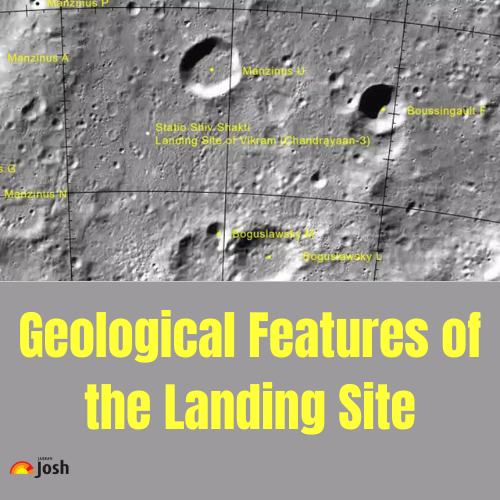
Lunar Impact Craters and Their Role
The Shiv Shakti point is surrounded by several ancient impact craters. The study indicates that craters such as Manzinus, Boguslawsky, and Schomberger played significant roles in shaping the landscape around the landing site. These large craters ejected debris that formed the surrounding terrain, helping researchers trace the origin of rock samples found at the landing site.
| Crater Name | Diameter | Age | Notable Features |
| Manzinus | 96 km | 3.9 billion years | Flat crater floor, shallow walls. |
| Boguslawsky | 95 km | 4 billion years | Shallow crater with a hollow structure. |
| Schomberger | 86 km | 3.7 billion years | Well-preserved, deep crater with a central peak and raised rim. |
- Schomberger Crater: This crater is particularly noteworthy for its depth and the preservation of its central peak, steep walls, and ejecta blanket. The surrounding area, influenced by secondary cratering from Schomberger, has been crucial in understanding the region's geological history.
About Chandrayaan-3 Mission
Chandrayaan-3, signifying "Mooncraft" in Sanskrit, represents India's third ambitious lunar exploration endeavour. Spearheaded by the Indian Space Research Organisation (ISRO), this mission embarked on a journey to unravel the mysteries of the Moon's surface, with a particular emphasis on the enigmatic south pole region, a territory that remained largely unexplored until this mission.
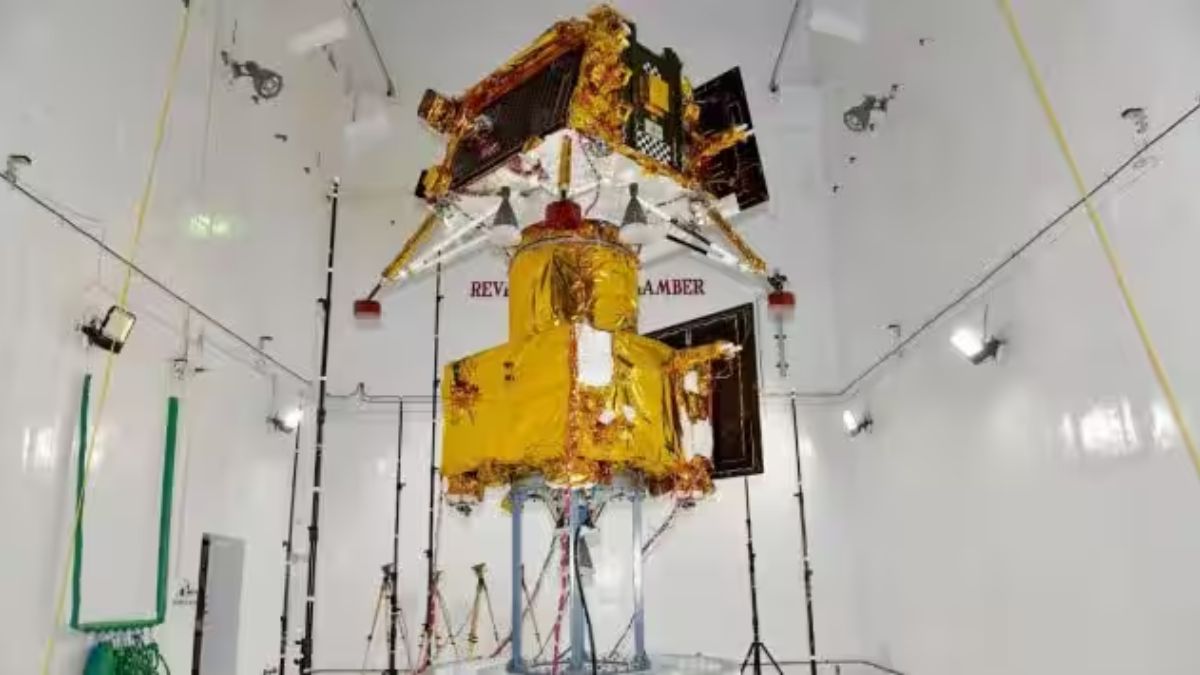
Source: NASA
Key Components of the Chandrayaan-3 Mission
- Vikram Lander: Named in honour of Dr. Vikram Sarabhai, a revered figure in Indian space science, the Vikram lander was designed to execute a controlled descent and soft landing on the lunar surface. Its successful touchdown at the designated Shiv Shakti Point marked a historic achievement, establishing India as the first nation to accomplish a soft landing in the Moon's southern polar region.

Source: NASA
- Pragyan Rover: Translating to "wisdom" in Sanskrit, the Pragyan rover is a compact, solar-powered robotic vehicle equipped with scientific instruments to analyze the lunar surface. Deployed from the Vikram lander, Pragyan embarked on a mission to traverse the lunar terrain, conducting in-situ examinations and transmitting valuable data back to Earth.
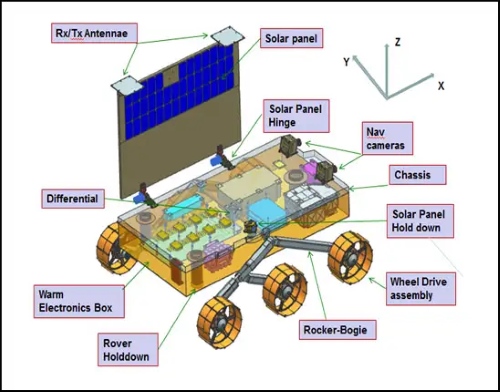
Source: NASA
Significance of the South Pole Landing
The selection of the Moon's south pole as the landing site for Chandrayaan-3 holds immense scientific significance. This region is believed to harbour water ice in permanently shadowed craters, a resource that could prove invaluable for future lunar exploration and potential human habitation. Additionally, the South Pole's unique geological formations and exposure to solar radiation offer a wealth of opportunities for scientific research and discovery.

Source: NASA
Scientific Objectives
The Chandrayaan-3 mission encompasses a range of scientific objectives, including:
- Investigating the presence of water ice: The mission aims to confirm the existence and abundance of water ice in the south pole region, utilizing instruments on both the Vikram lander and Pragyan rover.
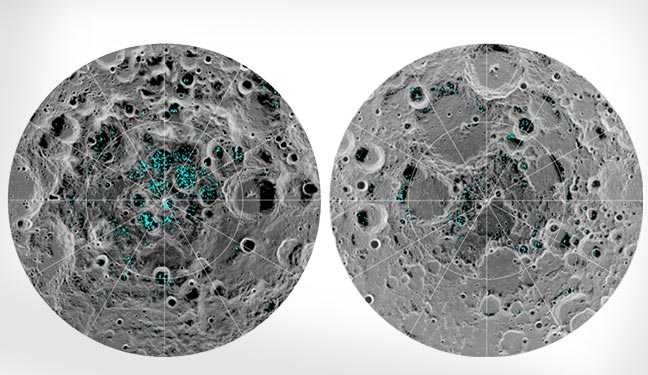
Source: NASA
- Analyzing the lunar surface and subsurface: The mission seeks to examine the composition and properties of the lunar regolith (surface material) and subsurface layers, shedding light on the Moon's geological evolution.
- Studying the lunar exosphere: The mission aims to explore the Moon's thin atmosphere, known as the exosphere, and understand its interaction with the solar wind and other space phenomena.
Technological Advancements
Chandrayaan-3 showcases India's prowess in space technology and engineering. The successful development and deployment of the Vikram lander and Pragyan rover demonstrate ISRO's capabilities in spacecraft design, propulsion systems, navigation, and communication technologies.
International Collaboration
While primarily an Indian endeavour, Chandrayaan-3 also fosters international collaboration in lunar exploration. ISRO has partnered with space agencies from other countries to share data and expertise, contributing to the global understanding of the Moon.
Future Implications
The Chandrayaan-3 mission paves the way for future lunar exploration endeavours, both by India and other nations. The discoveries made by this mission could have far-reaching implications for our understanding of the Moon's origin, evolution, and potential for supporting human activities in the future.
Conclusion
India's Chandrayaan-3 mission has significantly advanced our understanding of the Moon’s history and geology. By pinpointing the age of the Shiv Shakti Point at 3.7 billion years, ISRO has provided crucial data that connects lunar history with Earth's early geological events. This mission will continue to unlock the Moon's ancient secrets, helping scientists gain deeper insights into the cosmic evolution of our solar system.
Comments
All Comments (0)
Join the conversation